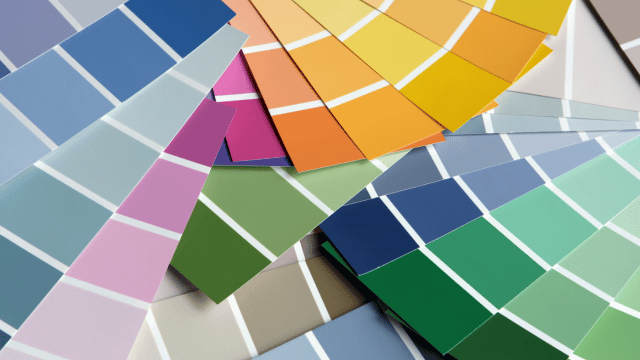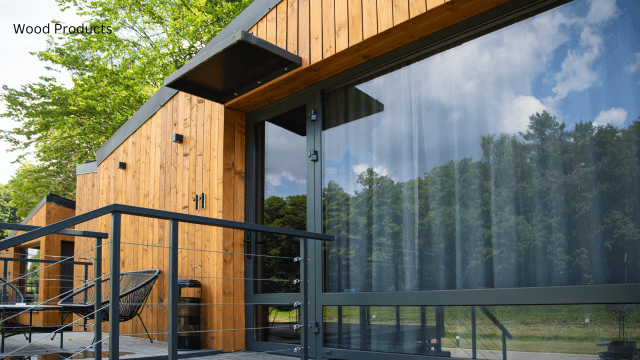Choosing the right paint colors for your home can be a daunting task. With so many options available, it’s easy to feel overwhelmed and uncertain about where to begin. But fear not! We’re here to help you navigate through the colorful world of interior design and find the perfect hues for your space.
In this article, we’ll share some expert tips and tricks to guide you in selecting the right paint colors that will transform your home into a stylish and inviting sanctuary. Whether you’re looking to create a cozy and intimate atmosphere or aiming for a modern and vibrant vibe, we’ve got you covered.
Discover how to play with different shades and tones to enhance natural light, create visual interest, and achieve the desired mood in any room. We’ll also delve into the psychology of colors, giving you a deeper understanding of how certain hues can affect your emotions and influence the overall ambiance of your home.
So, say goodbye to decision paralysis and get ready to embark on a color-filled journey that will leave your home looking stunning and perfectly tailored to your tastes. Let’s dive in and find the perfect palette for your space!
The Importance of Choosing the Right Paint Colors for Your Home
The paint colors you choose for your home play a crucial role in creating the desired atmosphere and setting the tone for each room. The right colors can make a small space appear larger, add warmth to a cold room, or create a calming and serene environment. On the other hand, the wrong colors can make a room feel chaotic, dull, or mismatched.
When selecting paint colors, it’s essential to consider the overall style and function of each room. Are you looking to create a cozy and intimate space, or do you prefer a bright and airy feel? Understanding the purpose of each room will help you narrow down your choices and ensure that the colors you choose align with your vision.
Factors to Consider When Selecting Paint Colors
Before diving into the world of paint swatches, there are a few factors you should consider. Firstly, take into account the existing elements in the room, such as furniture, flooring, and fixtures. These elements can serve as a starting point for selecting complementary or contrasting colors.
Secondly, think about the natural lighting in each room. Natural light can significantly impact how colors appear. Rooms with ample natural light can handle bolder and darker colors, while rooms with limited natural light may benefit from lighter hues to create a sense of brightness.
Lastly, consider the mood you want to create in each room. Different colors evoke different emotions and can set the tone for the space. For example, cool blues and greens can create a calm and serene atmosphere, while warm yellows and oranges can add energy and vibrancy.
Understanding Color Psychology in Home Design
Color psychology is the study of how colors can influence human emotions and behaviors. By understanding the psychology behind colors, you can use them strategically in your home design to create the desired ambiance and atmosphere.
Let’s explore some common colors and their psychological effects:
- Red: Red is known for its energy and intensity. It can evoke feelings of passion, excitement, and even hunger. However, it’s important to use red sparingly in home design, as too much can be overwhelming and create a sense of agitation.
- Blue: Blue is often associated with calmness and tranquility. It can promote a sense of relaxation and peace, making it an excellent choice for bedrooms and bathrooms. Lighter shades of blue can create a soothing atmosphere, while darker blues can add depth and elegance.
- Yellow: Yellow is a cheerful and uplifting color that can bring warmth and energy to a space. It’s often associated with happiness and can stimulate creativity. However, be cautious when using yellow in large amounts, as it can be overpowering and create feelings of anxiety.
- Green: Green is a versatile color that can create a sense of balance and harmony. It’s often associated with nature and can evoke feelings of freshness and renewal. Green is a great choice for any room in the house, as it can promote a sense of tranquility and connection to the outdoors.
- Neutral colors: Neutral colors such as white, beige, and gray are timeless and versatile. They provide a blank canvas for other elements in the room to shine and can create a sense of sophistication and elegance. Neutral colors are also great for creating a cohesive color scheme throughout your home.
Understanding the psychological effects of colors can help you select the right hues to create the desired mood in each room of your home.
The Impact of Natural Light on Paint Colors
Natural light can significantly influence how paint colors appear in a room. It’s essential to consider the direction and intensity of natural light when choosing paint colors to ensure that they look their best.
Rooms that receive a lot of natural light, such as south-facing rooms, can handle bolder and darker colors. These colors won’t be washed out by the sunlight and can add depth and drama to the space. Consider using deep blues, rich greens, or even dark grays to create a striking look.
On the other hand, rooms with limited natural light, such as north-facing rooms, may benefit from lighter hues to maximize brightness. Light colors reflect and amplify natural light, making the room feel more open and airy. Opt for soft pastels, creamy whites, or light grays to create a sense of spaciousness.
If you’re unsure about how a color will look in a specific room, it’s always a good idea to test it out. Paint a small section of the wall and observe how the color changes throughout the day as the natural light shifts. This will give you a better idea of how the color will appear in different lighting conditions.
Tips for Choosing Paint Colors for Different Rooms
Different rooms have different functions and require different paint colors to create the desired ambiance. Here are some tips for choosing paint colors for different areas of your home:
Living Room: The living room is often the focal point of a home, where you entertain guests and spend quality time with family. Consider using warm and inviting colors such as earthy browns, soft grays, or warm neutrals. These colors create a cozy and comfortable atmosphere that encourages relaxation and conversation.
Bedroom: The bedroom should be a sanctuary for rest and relaxation. Opt for calming and soothing colors such as soft blues, gentle greens, or lavender. These colors promote a sense of tranquility and help create a peaceful environment conducive to sleep.
Kitchen: The kitchen is often the heart of the home, where meals are prepared and shared. Consider using vibrant and energetic colors such as yellows, oranges, or reds. These colors can stimulate appetite and add a burst of energy to the space.
Bathroom: The bathroom is a place of self-care and rejuvenation. Consider using light and airy colors such as whites, pale blues, or soft grays. These colors create a clean and fresh ambiance that promotes relaxation and cleanliness.
Remember, these are just general guidelines, and ultimately, the choice of paint colors should reflect your personal preferences and the overall style of your home.
How to Create a Cohesive Color Scheme for Your Home
Creating a cohesive color scheme throughout your home is essential for achieving a harmonious and balanced look. Here are some tips to help you create a unified color palette:
Start with a neutral base: Begin by selecting a neutral color, such as white, beige, or gray, as the base color for your home. This neutral color will serve as a backdrop for the rest of the colors in your palette.
Use a color wheel: A color wheel can be a valuable tool when selecting complementary or contrasting colors. Complementary colors are opposite each other on the color wheel and create a vibrant and harmonious look when used together. Contrasting colors, on the other hand, are adjacent on the color wheel and create a bold and dynamic effect.
Consider color temperature: Colors can be categorized into warm or cool tones. Warm tones, such as reds, oranges, and yellows, create a cozy and inviting atmosphere. Cool tones, such as blues, greens, and purples, create a calm and soothing ambiance. Choose colors with similar temperature to ensure they work well together.
Add pops of color: Once you have your base color and complementary or contrasting colors, consider adding pops of color throughout your home. This can be done through accessories, artwork, or even furniture. Pops of color add visual interest and can bring life and personality to your space.
By following these tips, you can create a cohesive color scheme that ties your entire home together and creates a sense of flow and harmony.
Popular Paint Color Trends for Different Design Styles
Design trends come and go, and paint colors are no exception. Here are some popular paint color trends for different design styles to help inspire your color choices:
Modern and Minimalist: Modern design often features clean lines and a minimalist aesthetic. Opt for neutral colors such as whites, grays, or blacks to create a sleek and timeless look. These colors provide a clean canvas for showcasing furniture and accent pieces.
Farmhouse and Rustic: Farmhouse and rustic design are characterized by warm and earthy tones. Consider using colors such as creamy whites, warm browns, or muted greens to create a cozy and inviting atmosphere. These colors evoke a sense of nostalgia and create a rustic charm.
Scandinavian: Scandinavian design emphasizes simplicity, light, and natural elements. Use a neutral base of whites or light grays and add pops of color through accessories or artwork. Opt for pastel hues such as soft blues, pale pinks, or light yellows to create a fresh and airy feel.
Bohemian: Bohemian design embraces bold and vibrant colors. Mix and match rich jewel tones such as deep blues, emerald greens, or fiery oranges to create a bohemian-inspired space. Don’t be afraid to experiment with eclectic patterns and textures to add personality and character.
Remember, trends are great for inspiration, but it’s essential to choose colors that resonate with your personal style and preferences.
How to Test Paint Colors Before Committing
Before committing to a paint color, it’s crucial to test it out to ensure that it looks the way you envisioned. Here are some methods for testing paint colors:
Paint samples: Most paint stores offer small paint samples that you can purchase and test on your walls. Apply the samples to various walls in the room and observe how the color looks in different lighting conditions. Paint samples give you a better idea of how the color will appear on a larger scale.
Digital tools: Many paint brands offer online tools that allow you to digitally visualize how a color will look in your space. These tools use augmented reality to overlay the color onto a photo of your room, giving you a realistic preview of the final result.
Create a mood board: Collect paint swatches, fabric samples, and inspiration images to create a mood board. Arrange the materials together to get a sense of how the colors work together and create the desired mood. A mood board can help you visualize the overall look and feel of the room before committing to a specific paint color.
By testing paint colors before committing, you can avoid any surprises and ensure that the colors you choose are perfect for your space.
Professional Advice for Choosing the Right Paint Colors
If you’re still unsure about choosing the right paint colors for your home, don’t hesitate to seek professional advice. Interior designers and color consultants are trained to understand the nuances of color and can help you select the perfect hues for your space.
A professional can take into account your personal style, existing elements in the room, and the overall vision you have for your home. They can provide expert guidance and suggest color combinations that you may not have considered.
Remember, investing in professional advice can save you time, money, and potential regrets down the line. It’s worth considering if you want to ensure that your home looks its best.


